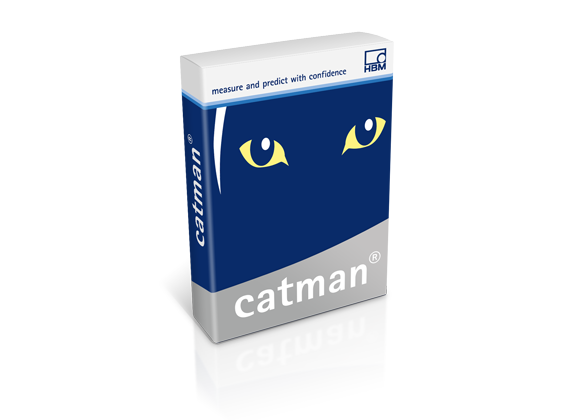RUAG: Full Scale Fatigue Testing with HBM measuring system
The reinforced structure of the F/A-18 fighter plane in the Swiss version will be tested in a complex largescale investigation. Realistic stresses, such as those that occur in flight, will be simulated with 68 hydraulic cylinders. This is to prove that the structure meets the relative sharp Swiss application conditions and that it can reach the required service life of 5,000 flying hours.
A full scale fatigue test is essential for the qualification and validation of the Swiss reinforcements. Based on a safety factor of 2, 10,000 flying hours must be simulated within 2 years.
The test structure is fitted with about 1,100 strain gages. In addition, displacement transducers, temperature sensors and pressure sensors were integrated into the test layout. The signals from these sensors must be measured and saved together with the parameters of the control system.
Task
Specifications were drawn up, based on the customer order, for a control system and for a data acquisition system. The hardware and software requirements were listed in detail in these documents. These specifications formed the basis for all queries and negotiations with possible suppliers.
We placed great value on optimal solutions for the following problems:
- Already installed and wired SGs must be able to be connected to the system
- Different supply voltages for SGs are important as different sized strain gages are installed
- The system must be capable of being expanded by another 1,000 measuring channels
- About. 200 channels must be measured and saved over 24 hours at a frequency of 10Hz.
- The selection of the channels measured at 10Hz may change from one measurement to the other. This must be possible without having to implement changes to the existing wiring
- Around 100 measured values from the control system must also be measured via an interface yet to be defined
- The data acquisition system and the control system must be able to exchange status information with each other.
Solution
Following thorough investigation of various suppliers and systems, we have decided on the following systems:
Data acquisition:
- MGCplus system with the software package catman®Enterprise from HBM
Control system:
- SmarTEST Loading System from FCS Control Systems
Interfaces:
- The data exchange between both systems will be implemented via a CAN Bus connection. Around 100 signals can be exchanged via this Bus at 10Hz.
System overview
The control cabinets with the control circuits and measuring amplifiers are set up in the vicinity of the test specimen. Short cables can therefore be used for analog measuring signals with less interference effects.
All computers and monitors for operating the test are set up in a control room. The control rooms offers a good overview of the test layout. The connections between the control room and the control cabinets in the hall are implemented via network connections. We therefore only need a few cables for the long connection routes.
Measuring system data
- 4 control cabinets, each with 4 MGCplus racks and a UPS unit
- The MGCplus racks are each equipped with 14 cards with 8 measuring channels each
- Windows 2000 Server PC and 2 Client PCs
Measured channels
- About 1,500 SG channels in 4-wire circuitry
- 14 strain transducers with 6-wire circuitry
- 12 displacement transducers (potentiometric cable linear sensor)
- 13 temperature sensors (type K)
- 96 channels (force and status signals) via the CAN Bus from the FCS control system
Test procedure…
Dynamic tests
In normal test operation, the cells are loaded in blocks with 1,000 flying hours (FH) each in 24 hour shift operation. Such a block lasts around a week. A 1,000 FH block includes 5 runs of a loading program which is equivalent to 300 simulated flights or 200 FH. The loading program itself consists of a sequence of 26,900 load cases. There are 2,011 different types of load case.
Static tests
A strain survey is implemented at the end of each 1,000 FH block. The cells are loaded and then released in steps of 10% up to 70% of the maximum load in seven selected load cases.
…Measuring stages
The entire data acquisition is implemented with the HBM catman®Enterprise software.
Dynamic measurements
During dynamic tests, 200 measuring channels are permanently recorded with a frequency of 10Hz. A measurement series takes about 20 hours and includes the data from a 200 FH cycle.
This produces a data file with around 125 million measured values. This data is then processed in catman® with scripts.
While the test is running, all important test parameters are displayed online on the HBM server PC screen. Plots of interesting sensor data are also displayed.
…and static tests
We use the "Snap Shot" function for measurements during a strain survey. This means that when a specific load level is reached, all active switched measuring channels are measured and saved time-synchronized at the press of a button (about 1,600 measuring channels). A data file normally contains 99 measuring lines. The data is evaluated with catman® scripts once the measurement is complete. Important test parameters are also shown online on the Server PC screen during static measurements.
The reasons why we have decided for this system
Impressive concept for integrating both HBM and FCS systems
- The time-synchronized measuring and saving of data from 200 channels with 10Hz is easily possible as each measuring channel has its own A/D converter
- Simple changeover of any channels between static and dynamic measurements without changes to wiring
- The 4-wire circuitry for the strain gages ensures minimization of measurement errors despite the non-uniform wiring
- The data acquisition system has now been in operation for about 1 year. Experiences made so far show that we have a very reliable system that fully meets our expectations.
